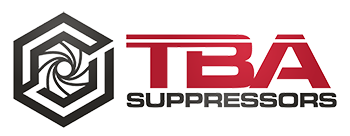Silencer design, manufacturing processes and materials have come a long way in just the last ten years. Once saddled with sealed cans and and limited options, shooters can now pick from a handful of industry-leading silencers that can be disassembled and cleaned with little effort. And with the evolution of silencer technology has come a shift of form factor – integrallly suppressed firearms that were once considered the pinnacle of noise suppression have been challenged by direct thread options. But as silencer ownership increases at a breakneck pace, collections are growing in parallel, allowing for a return to integrals that have also evolved in the last decade. Recently TFB visited TBA Suppressors, makers of integrally suppressed firearms and a traditional line of direct thread/mount silencers.
Tucked into rural Virginia about two hours south of Washington D.C., TBA is headquartered in a small but impressive manufacturing facility. While TBA makes a silencer for almost any host imaginable, their bread-and-butter line of integerally suppressed firearms are impressive in terms of both design and function.
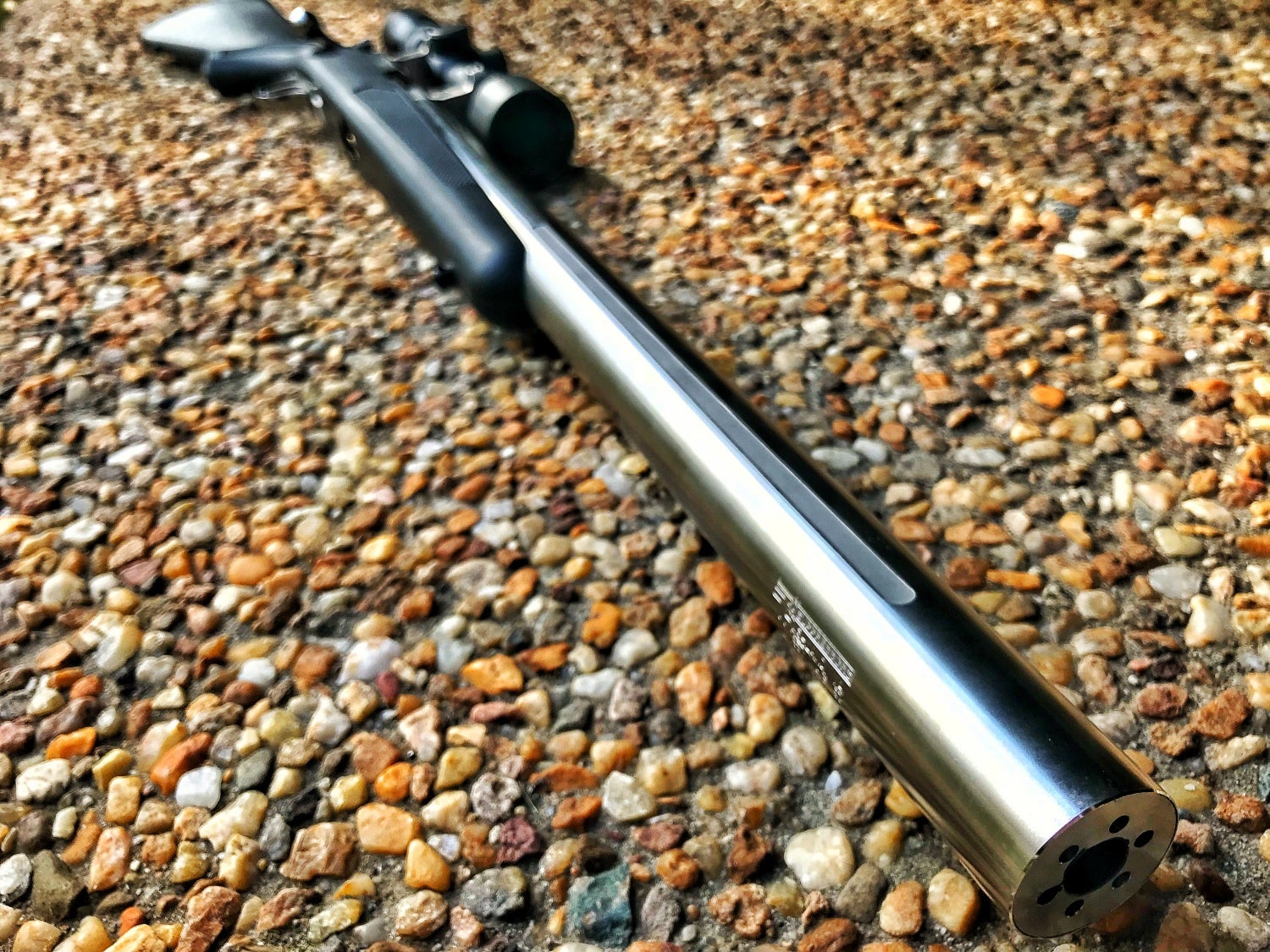
“For silencer owners, an integral can be the holy grail of hosts,” explains Todd Brueckmann, owner of TBA. “We build guns that perform while still being affordable.” For those unfamiliar with integral suppressors, this NFA category refers to a silencer/host combination that uses a ported barrel or integrated gas system to reduce high velocity ammunition to subsonic levels and/or provide extra internal volume for maximum suppression. One perceived downside of integrals is a silencer that is permanently mated with the host weapon.
TBA Suppressors Rimfire Integrals:
However, in TBA’s flagship gun, the Sicario – an integrally suppressed .22lr Ruger MKIV, Brueckmann has designed an adapter that allows for the silencer to be removed and mounted on other rimfire hosts. Meanwhile, the transformed MKIV is a clean representation of what a quality integral should strive to be – a suppressed gun that looks like it came built this way from the factory. One of the key aspects of the Sicario’s build quality is the pristine seam between the pistol’s receiver and the tube of the silencer. A technique that shows TBA’s commitment to building quality products.
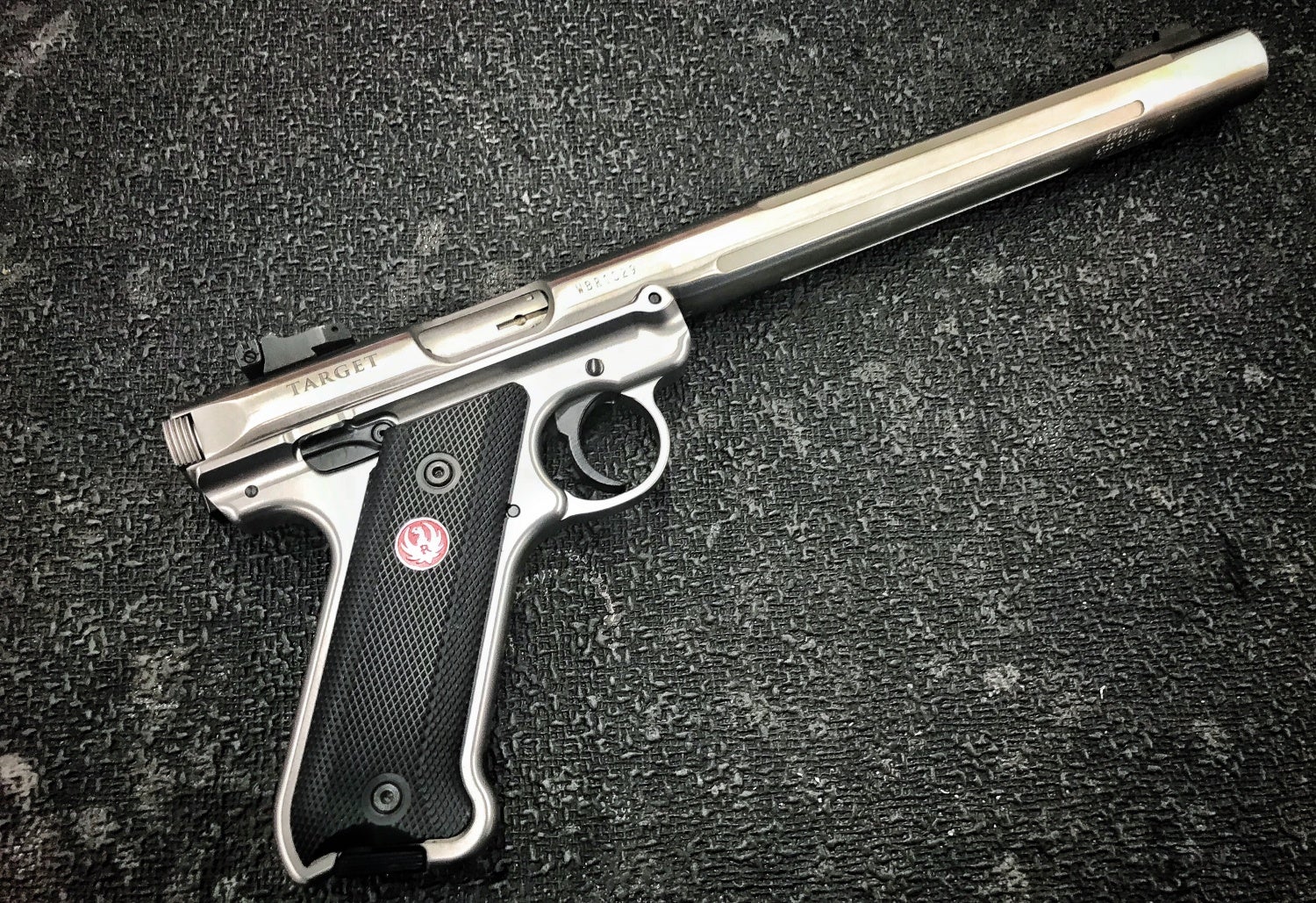
TBA Suppressors Sicario integrally suppressed pistol.
Disassembly of the Sicario is done with a hex wrench inserted into the muzzle of the the silencer and with a counterclockwise turn. Even with a few thousand rounds through the pistol, the monocore slips out from the tube with little effort. The entire assembly is held together by the force of the core sandwiching the silencer tube between the muzzle cap and the receiver.

Disassembled – TBA Suppressors Sicario integrally suppressed pistol showing barrel porting.
The standalone silencer adapter for the Sicario mimics the barrel and receiver to mount the monocore and tube to a rimfire standard thread pitch of 1/2×28. For the NFA shy or uninitiated, this inexpensive adapter allows shooters to move their integral silencer to other rimfire platforms.
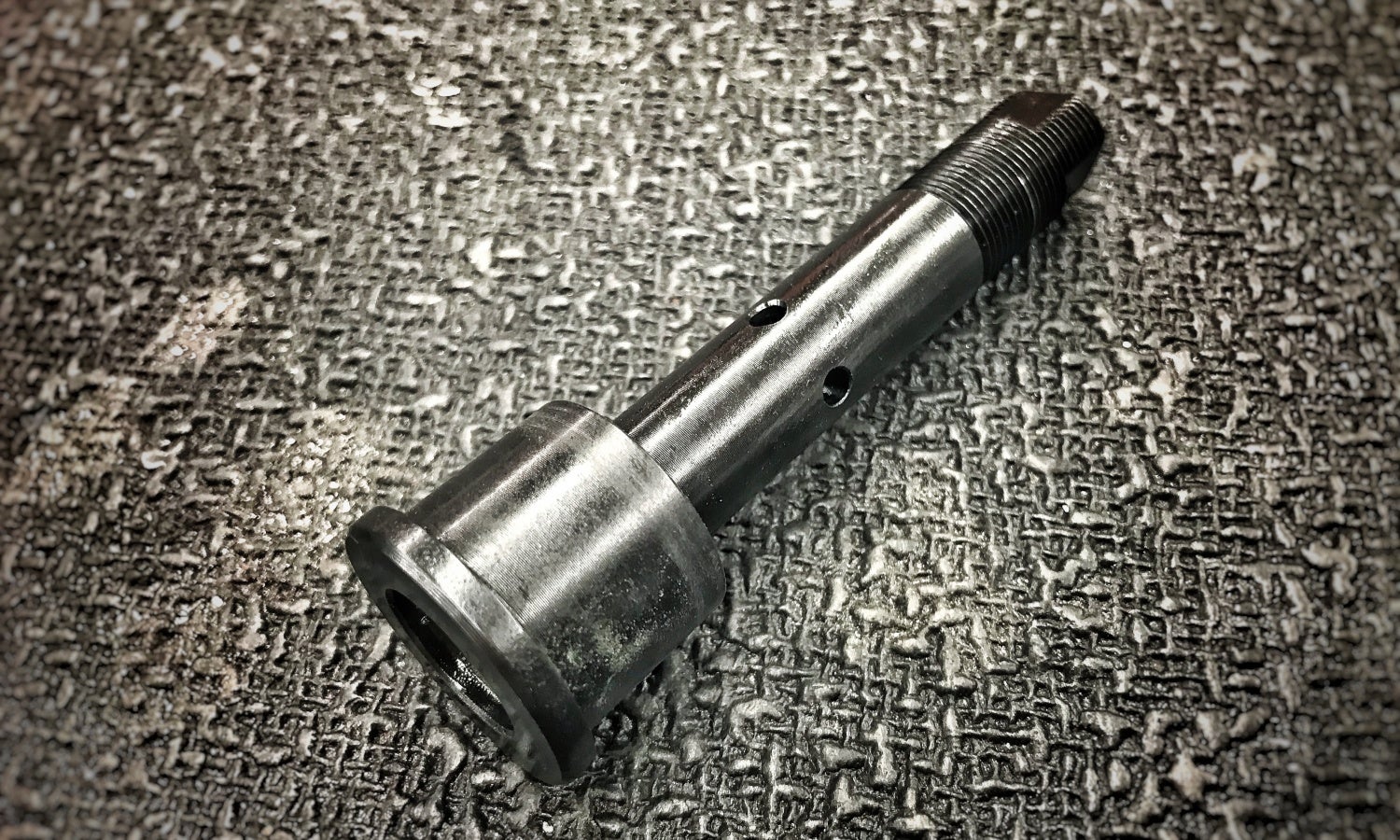
An adapter that turns the Sicario’s silencer into a thread-on can for other hosts.
The assembly can be easily indexed so that the front sight sits at the 12 o’clock position, although it rides a bit high for most guns.
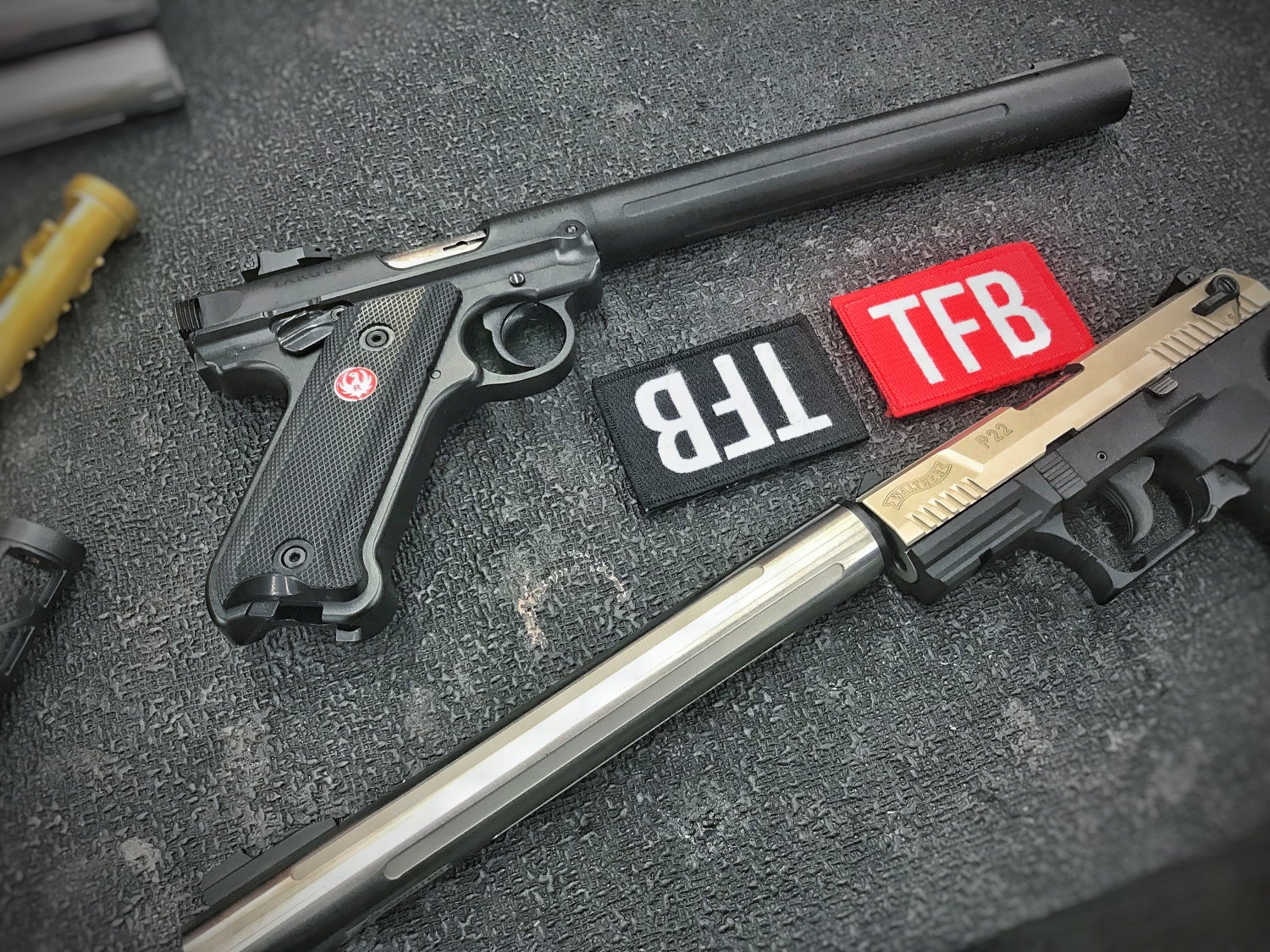
The Sicario (Top) and a Sicario silencer mounted on a different host setup with the use of an adapter (Bottom).
Over the years I have had the chance to shoot a handful of integrally suppressed rimfire pistols, starting out back in 1999 with a roadside demonstration of an unnamed Ruger MKI build somewhere off the beaten path in rural Georgia. The TBA Sicario stands out as impressively quiet with only a slight change in report between standard velocity and high velocity rounds. If you are looking for “Hollywood Quiet”, this pistol is about as close as you are going to get. So good in fact, that I committed to buying a Sicario for myself – and if you are a regular reader of my reviews, you’ll remember that it’s a rare event that I purchase any of the review products with my limited budget.

TBA also offers the QAS, an integral pistol built on the Browning Buckmark line of pistols. While not as popular as the Ruger build (probably based on aesthetics), the Buckmark QAS was slightly quieter when comparing action noise.
Noting a shift in the ease of manufacturing, Brueckmann has switched most of his builds from the traditional K Baffle style to a unique monocore design. Not only does it save machining time (by a factor of four or five), but after extensive testing, the TBA monocore out performs the K Baffle builds in terms of overall suppression. There is a slight amount of first round pop (FRP) with the monocore, but it was slight enough to not be a concern.
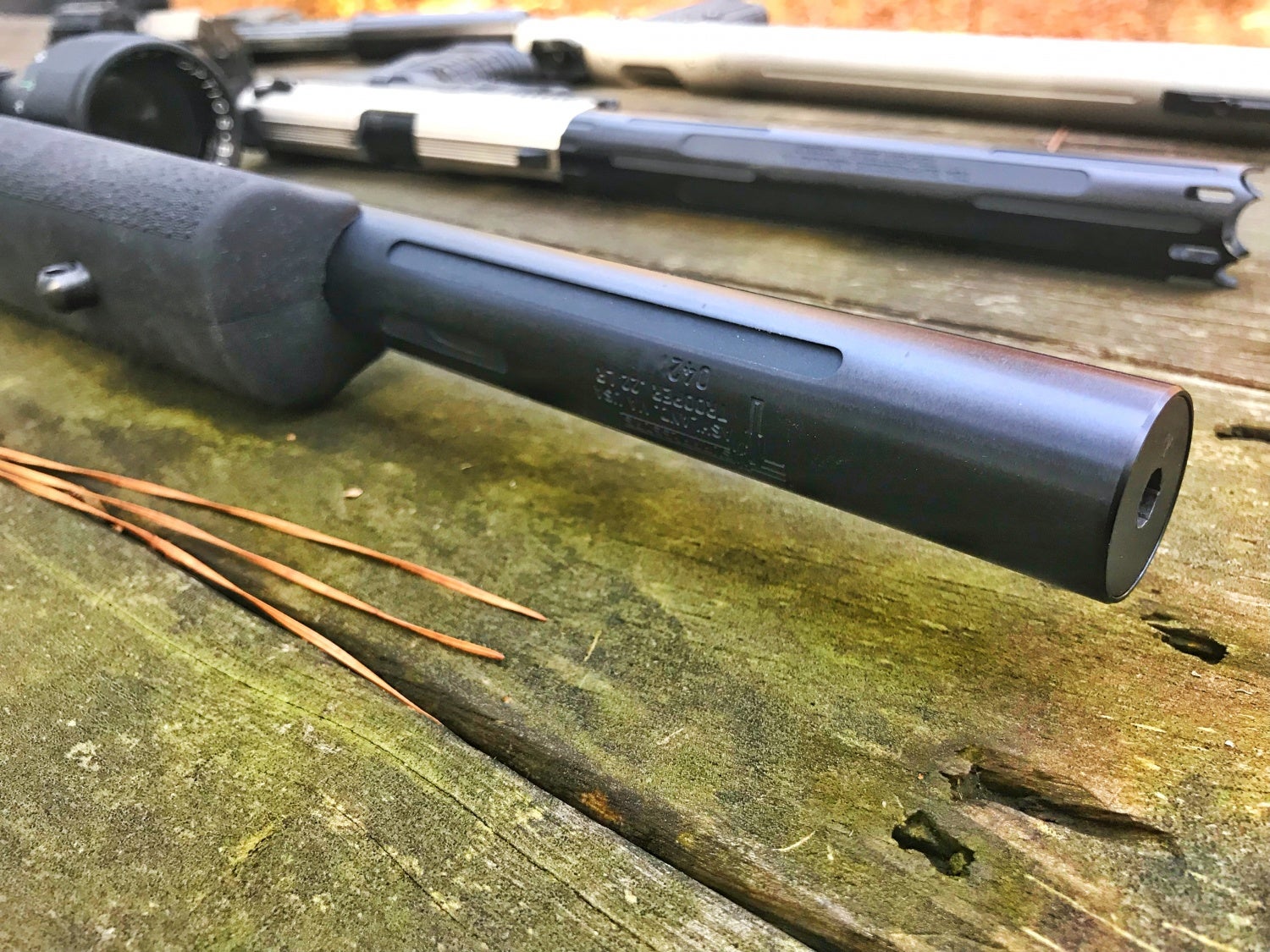
Of course, TBA also builds integrally suppressed rimfire rifles based on the Ruger 10/22 and 17/22 platforms. Also ported and utilizing a thread on monocore design, the TBA Trooper 22 barrel lengths are kept to at least 16.1” to avoid a short barreled rifle status and another $200 tax stamp. Of course, if you are interested in a SBR build, we shot a 10″ “Commando” model that was compact as well as very quiet.

TBA Suppressors Trooper 22 Integral Ruger 10/22
Besides the Sicario, the second most impressive integral I experienced during my visit to TBA was the MP15SD based off of the Smith & Wesson M&P15. The trigger reset was louder than the report of the high velocity rounds. If you have ever considered a rimfire AR15 for a trainer or for instructing new shooters, a suppressed version is a good choice. I have shot the Innovative Arms integrally suppressed M&P15, and in the absence of a side-by-side comparison, I can rank the TBA at least on par with it’s performance. I did love to see what an SBR MP15SD version would look like.

TBA Suppressors Centerfire Integrals:
One of my favorite suppressed rifles that I own is my Ruger 77/357. With .38 Special loads, my build can rival a rimfire bolt gun in suppression levels while launching four times the mass down range. However, if I had to do it all over again, I would build my Ruger 77 into an integral instead of using an dedicated Liberty Mystic silencer.
I was fortunate enough to shoot both the .357 Magnum SD and the .44 Magnum SD during my time at TBA. With subsonic rounds, both were silly quiet. The clank of the steel target at the 100 yard line was louder than the rifle firing.

For hunters, the beauty of an integrally suppressed bolt gun is that with a simple magazine exchange for heavy supersonic loads in either .357Mag or .44Mag calibers will result in a quiet setup carable of taking medium sized game.

Also based on the Ruger 77 line of rifles, both TBA versions feature a monocore internal structure (previously baffles) and can be custom ported for different loads.

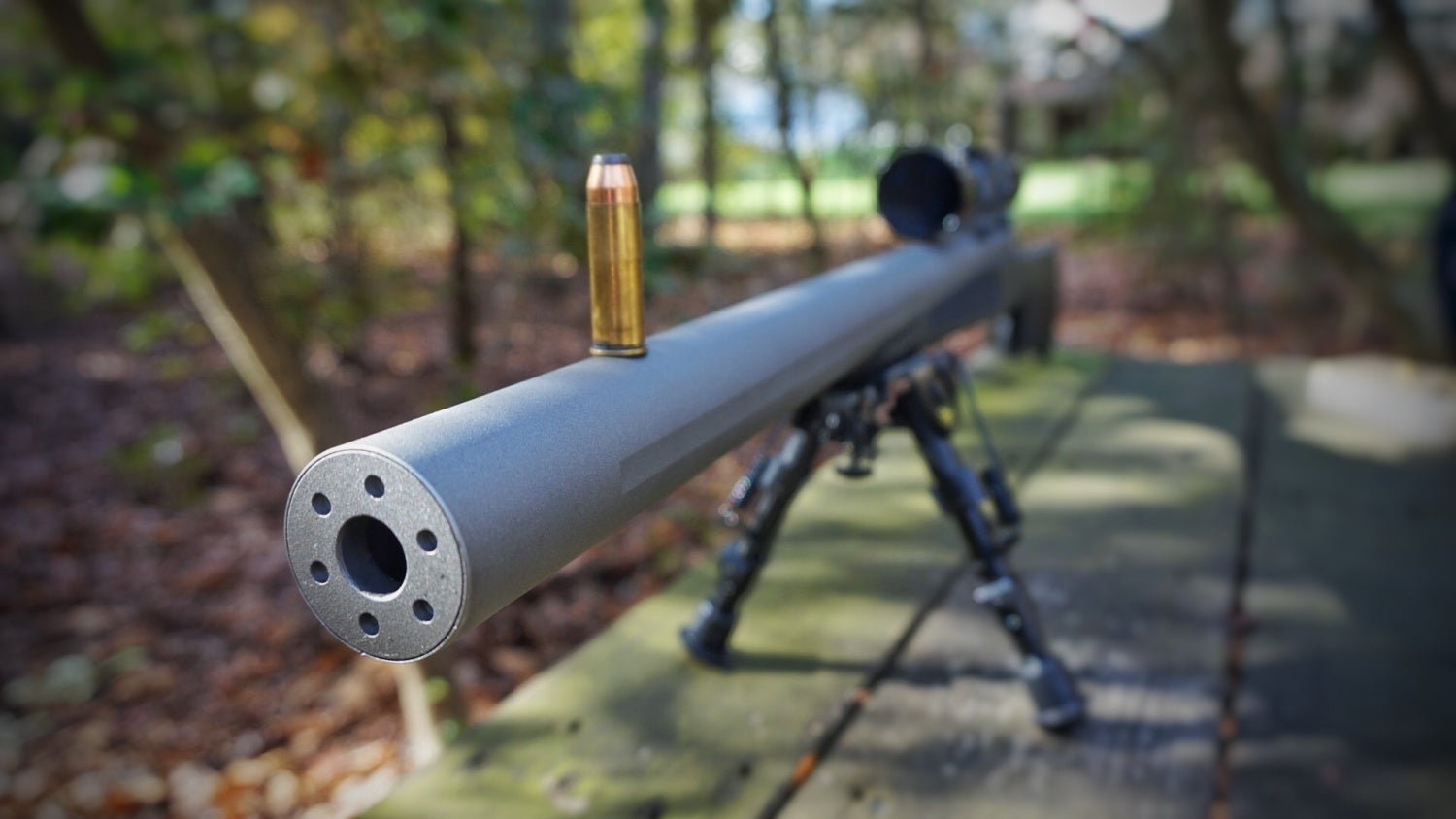
Are integrally suppressed guns the right choice for all shooters in search of maximum suppression? Probably not. But they are also no longer relegated just to the specialty market. Benefits range from increased suppression, barrel porting to reduce standard velocity ammunition to subsonic levels, a more covert appearance (bull barrel look) and a shorter overall length when compared to a host gun and thread on silencer combination.
TBA Suppressors makes some of the nicest and quietest integrally suppressed guns on today’s market. Pricing runs from approximately $600 to a little over $1,000 depending on the model, aluminum or titanium materials and other options. Full specifications and pricing can be found on TBA’s website.

Next week we will take a look at TBA’s thread on silencer models as well as their manufacturing processes and a quick dive into company history.

 Your Privacy Choices
Your Privacy Choices

